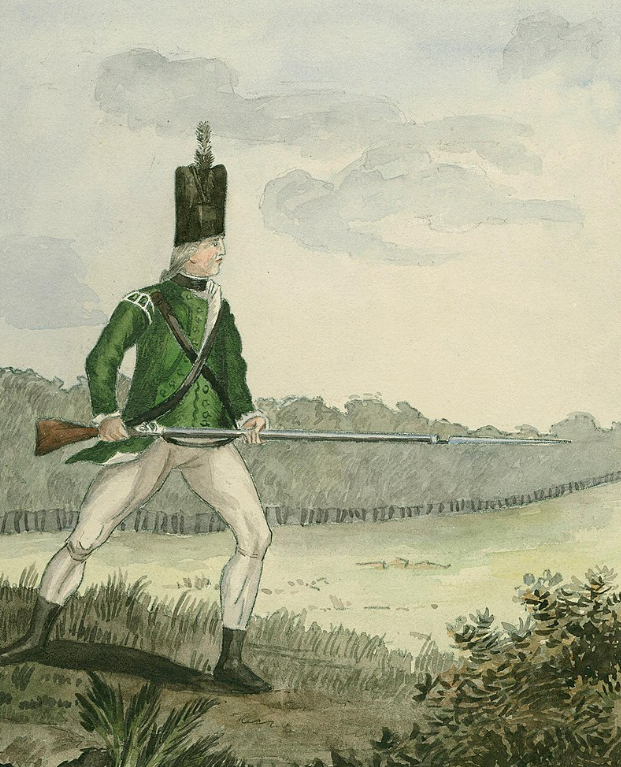The True Healers of Colonial America: A Mother's Home Remedies for a Son off to War
- Denise Rompilla
- Mar 24
- 4 min read
Updated: Mar 25

What was more deadly than the fierce battles between patriots and the British during the Revolutionary War? Disease and injuries leading to infections caused equal devastation on the battlefield than combat itself. While many soldiers succumbed to enemy attacks and typical battles, all colonial troops faced the looming threat of communicable illness, which spread rapidly through crowded camps. Though General George Washington made efforts to combat such diseases as smallpox through mass inoculation, not all soldiers had access to such aid. In most cases, soldiers relied on their own supply of herbs and remedy recipes from home. This heavy reliance on home remedies highlights the importance of knowledge regarding what herbs work best for which situation.
Herbal medicine was the “go to” of healthcare for colonial soldiers, and women played
an essential role in cultivating and passing down this knowledge. Generations of women, acting as home doctors and gardeners, equipped their husbands and sons with remedies and recipes before sending them off to battle. Their botanical wisdom, written on notes and supplies, offered soldiers a fighting chance as they traveled to the battlefield, often long before the battle even started.
Nevertheless, why did women tend to learn herbal medicine in particular? Colonial America was far less populous than it is today; in fact, about 90% of colonists
lived in rural areas far removed from urban cities. This disproportionate rural population meant that access to formally trained physicians was limited, if not impossible, for many families. As a result, mothers and wives often took on the role of healers, dealing with common conditions and injuries within the household.
Since it was rare for women to receive formal medical education, they turned to
alternative sources of knowledge. Guidebooks like Every Man His Own Doctor: OR, The Poor Planter’s Physician, and remedies passed down orally through generations became vital resources. Through ingenuity and necessity, women curated and recorded an assortment of herbal treatments, relying on the plants they grew in their own gardens to address the health needs of their families and communities.
Colonial women cultivated various herbs to treat common ailments such as jaundice,
diarrhea, respiratory illnesses, and infections. These remedies came from a mix of cultivated garden plants like hyssop, comfrey, and fennel and wild plants such as snakeroot and sarsaparilla. In addition to knowledge passed down through generations, women also incorporated Native American herbal knowledge to decide which plants to grow in their gardens.
This practice of at-home cultivation allowed families to save money by treating common
conditions themselves, reserving funds for more serious ailments that required a physician's expertise. However, soldiers didn’t always have the chance to seek medical aid, and in battle they had to resort to what they could find around them, which is what led to many mothers and wives packing more important herbs for them, such as chamomile, mint, licorice, yarrow, horsetail, and sage. These herbs were used for everyday happenings during the war, such as wounds, fatigue, and infections. Women also provided soldiers with notes and recipes, enabling them to identify and use herbs found in their surroundings when resources were scarce.
Depicted below is a page from a soldier’s diary in 1777. Within this diary entry we find a few recipes and notes on how to deal with certain ailments such as vomiting or fever. The notes on the page not only reference sicknesses but also remedies for
other ailments such as a boil. Transcribed, the note reads:
“For a boyl (modern spelling: boil) Take fresh
cows dung and fry it in the hogs fat and apply it
to the sore and it will soon cure it.”
Considering that most of the colonial population resided in rural areas with limited access to medical professionals, it is plausible that the remedies in the page of notes were given to him (the soldier) by a woman in his life. This theory is supported by the language used in the first note: “For the breaking out, take the tops of ferns and make a tea out of it; they say it is very good”. The phrase “they say it is very good” suggests that the remedy was not written from him but were given to him by his mother or another close and trusted woman he knows. If men were the ones to educate themselves on such remedies, the soldier would also have no need for the notes where he can rely on himself or other soldiers aid instead. Yet, the notes imply someone from home helped him.
Women’s contributions to history often go untold in U.S. education, yet instances like the
soldier’s notes give us a glimpse into the lives of soldiers beyond the battlefield. As it was 1777 that this was written, we can note that certain remedies may not be acceptable today due to sanitary reasons or the new information we have about conditions. While these remedies may seem like minor, menial notes (a soldier’s handwritten reminders) reveal the deep reliance had on women's knowledge simplest illnesses and injuries. Physicians were scarce, and medical education even scarcer. Thus, women helped keep the common soldier of the Revolutionary War healthier and alive.
Primary Source: Diary of a Middlesex County soldier from the Continental Army, 1777, New Jersey State Archives




Comments